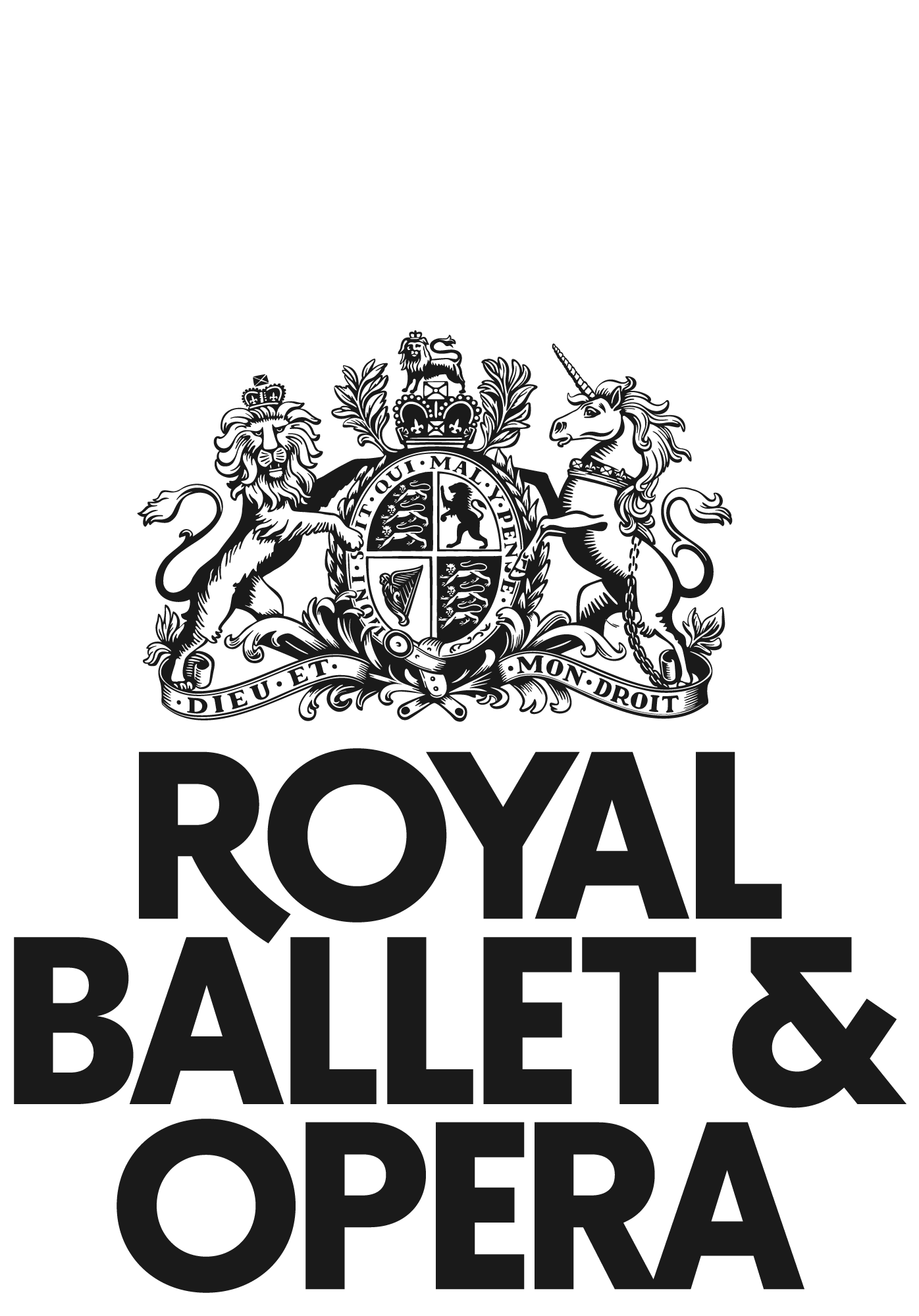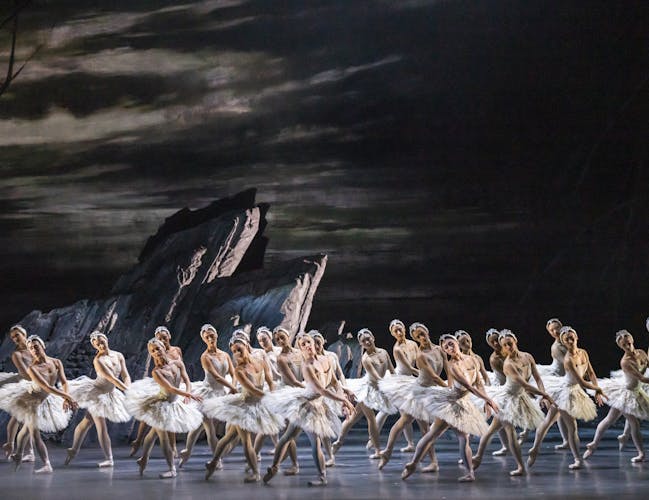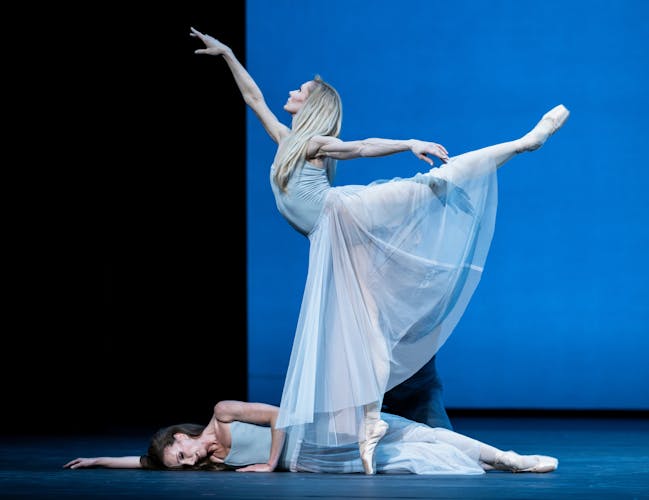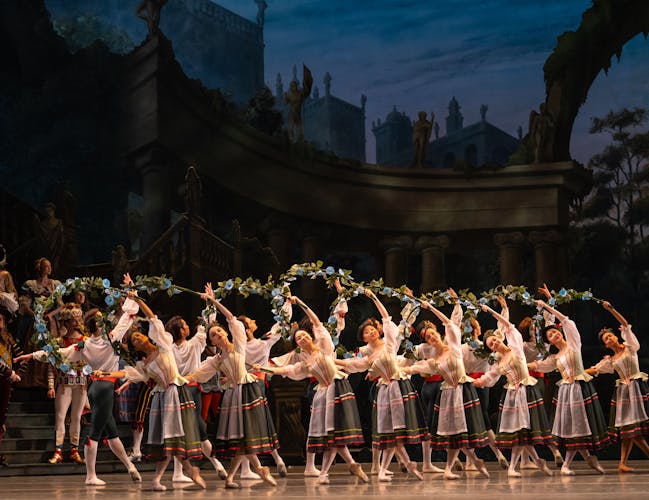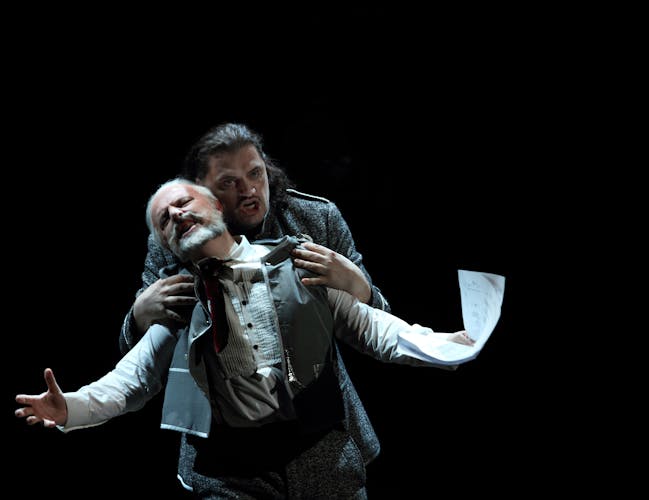Creative Spotlight: Tchaikovsky
Read more about the life and work of Pyotr Il'yich Tchaikovsky.
Pyotr Il’yich Tchaikovsky was born in 1840 in the town of Kamsko-Votkinsk, in the Ural mountains of Russia. He is known today for his musical compositions, spanning ballet, opera, symphonies and chamber works. His most famous works for the stage include Swan Lake, The Sleeping Beauty, The Nutcracker, Eugene Onegin and The Queen of Spades. He is also the composer of the 1812 Overture, Capriccio Italien, the Romeo and Juliet Fantasy Overture, and Francesca da Rimini. His works are characterised by rich orchestration, beautiful melodies and vivid emotional contrasts, combining Russian folk influences with European musical styles. Read on to find out more about the life and works of Pyotr Il’yich Tchaikovsky.
Quick Facts
What was Tchaikovsky famous for?
Tchaikovsky is best known for his ballet scores, and especially those for Swan Lake, The Sleeping Beauty and The Nutcracker – sometimes known as the ‘big three’. He wrote 11 operas, with Eugene Onegin and The Queen of Spades being the most frequently performed. His most famous concert works include the Violin Concerto in D Major, the Piano Concerto no. 1 in B flat minor, the 1812 Overture and his symphonies.
What nationality was Tchaikovsky?
Tchaikovsky was Russian. He was born in Kamsko-Votkinsk, an industrial town 800 miles East of Moscow.
How many operas did Tchaikovsky write?
Tchaikovsky wrote 11 operas, and the most frequently-performed titles are Eugene Onegin, The Queen of Spades and the one-act opera, Iolanta.
What unusual instruments did Tchaikovsky compose for?
Tchaikovsky was a master of orchestration, and he used some unusual instruments in his compositions. The 1812 Overture (1880) features a carillon (bells operated from a type of keyboard) and cannons to represent the Battle of Borodino, a conflict which would ultimately result in the defeat of Napoleon’s French forces. That same battle was later depicted in Leo Tolstoy’s novel, War and Peace (1869). The dance of The Sugar Plum Fairy from The Nutcracker also uses the celesta; a piano-like instrument which makes a high, tinkling bell sound.
Tchaikovsky's Notable Works
Ballets:
- Swan Lake (1876)
- The Sleeping Beauty (1889)
- The Nutcracker (1892)
- Onegin (1965) – This ballet was created posthumously, from a selection of the composer’s musical works.
Operas:
- The Voyevoda (1867–1868)
- Undina (1869) not completed
- The Oprichnik (1872)
- Vakula the Smith (1874)
- Eugene Onegin (1878)
- The Maid of Orleans (1879)
- Mazepa (1883)
- Cherevichki (1885) (Sometimes known as ‘The Tsarina’s Slippers’)
- The Enchantress (1887)
- The Queen of Spades (1890)
- Iolanta (1891)
Other Famous Compositions:
- 1812 Overture
- Romeo and Juliet Fantasy Overture
- Capriccio Italien
- Francesca da Rimini
- Violin Concerto in D Major
- Piano Concerto No.1
- Serenade in C for Strings
- Piano Trio in A minor (‘dedicated to the memory of a great artist’)
- Souvenir de Florence, for String sextet
- Symphony no. 1 ‘Winter Daydreams’
- Symphony no. 2 ‘Little Russian’
- Symphony no. 3 ‘Polish’
- Symphony no. 4
- Manfred Symphony
- Symphony no. 5
- Symphony no. 6 ‘Pathétique’
Early Life
Tchaikovsky grew up in Kamsko-Votkinsk, Russia, an industrial town where his father worked as the manager of a metalworks. He showed musical promise early on, flourishing in his piano lessons from the age of five. He initially trained as a lawyer, and later worked in the civil service, before embarking on his musical studies at the newly-founded St Petersburg Conservatoire in 1862.
Tchaikovsky's Work
Early career and works
Tchaikovsky enjoyed early success while still a student with Anton Rubinstein in St Petersburg, with an Overture and a Cantata. He studied European musical principles and forms, and combined with his knowledge of harmony and counterpoint, he began to apply combine these techniques with traditional Russian influences. Following his graduation, he became Professor of Music Theatre at the Moscow Conservatory and wrote his first symphony (known as ‘Winter daydreams’), with the premiere taking place in 1867.
His musical successes were infrequent, and Tchaikovsky was deeply sensitive to public criticism, which he experienced with his First Piano Concerto, composed in 1875. His earliest complete opera was The Voyevoda, and its premiere took place in 1869, followed by The Oprichnik in 1874, Vakula the Smith (1874), and Eugene Onegin, which was first performed by students from the Moscow Conservatoire in 1879. Other works from this period include the variations on a Rococo Theme for cello and orchestra, two more symphonies, and Swan Lake.
Tchaikovsky’s star began to rise in earnest after 1880, when his works achieved new popularity, including among key future collaborators, Alexandre Benois, Léon Bakst and Sergei Diaghilev (the future founder of the Ballets Russes). His 1812 Overture was performed in 1882, and became well-known for its use of cannons.
When Tsar Alexander III came to the Russian throne in 1881, Tchaikovsky was awarded the Order of Saint Vladimir and a hereditary title of nobility, advancing the composer’s social standing. Ivan Vsevolozhsky took over as Director of the Imperial Theatres and cultivated his relationship with the composer, staging Eugene Onegin at the Bolshoi Theatre, Moscow at the behest of the Tsar.
The Ballets
Tchaikovsky is today especially remembered for his contributions to the ballet world – namely, the scores for three major works of the classical ballet canon, Swan Lake, The Sleeping Beauty and The Nutcracker.
The earliest of the three was Swan Lake, which Tchaikovsky composed over the span of a year following a commission in May 1875 by Vladimir Petrovich Begichev, who directed the Imperial Theatres in Moscow. When creating this composition, Tchaikovsky studied the scores of other ballet composers such as Cesare Pugni, Ludwig Minkus, Léo Delibes, Adolphe Adam and Riccardo Drigo. From Adolphe Adam’s Giselle he borrowed the idea of using a leitmotif (in which certain melodies are associated with characters or moods). Swan Lake is steeped in leitmotifs, with Odette and Odile having their own signature sounds that exemplify the contrasting natures of their characters. He also borrowed from his own previous work: the famous Dance of the Cygnets draws on an earlier composition, a short ballet written for his nephew and niece. Tchaikovsky completed the score in 1876 and the ballet premiered in March 1877, with choreography originally made by Julius Reisinger. Today, it is the choreography of Marius Petipa, ballet master at the Imperial Ballet, that is still performed today.
Twelve years after Tchaikovsky completed the score for Swan Lake, he was approached by the then director of the Imperial Theatres, Ivan Vsevolozhsky, to create yet another ballet. This time, the source material was Charles Perrault’s La Belle au bois dormant, though Tchaikovsky was also inspired by the Brothers Grimm’s retelling of that same tale, Dornröschen. Tchaikovsky composed the score from 1888 to 1889 following the meticulous instructions of Petipa. As with Swan Lake, Tchaikovsky interwove musical threads throughout the ballet, illustrating the conflict between the forces of good and evil as exemplified by the benevolent Lilac Fairy and the wicked fairy Carabosse. Other famous musical moments from The Sleeping Beauty include the Garland Waltz (which Disney later reworked into the song Once Upon a Dream for its animated film).
The last of the three ballets to be composed was The Nutcracker. In 1890, following the success of The Sleeping Beauty, Vsevolozhsky commissioned Tchaikovsky again. This time, he was asked to create a double bill: Iolanta, an opera, and a ballet adaptation of E.T.A. Hoffman’s Nussknacker und Mausekönig (The Nutcracker and the Mouse King). Once again, Tchaikovsky teamed up with Petipa, whose precise directives Tchaikovsky followed. Notably, the score uses a celesta – which lends a twinkling, almost sparkling quality to the Dance of The Sugar Plum Fairy, one of the ballet’s highlights. The double bill of Iolanta and The Nutcracker premiered in 1892 and today, The Nutcracker remains one of his most famous and most beloved works.
The Queen of Spades
Tchaikovsky’s 1890 opera, The Queen of Spades, was based on the short story of the same name by Alexander Pushkin, and features a libretto by Tchaikovsky’s brother Modest Tchaikovsky. Its central character is Gherman – a man whose love for a young woman, Liza, is destroyed by his obsession with gambling. The story was set during the reign of Catherine the Great, and features a number of musical pastiches, including from Mozart’s The Magic Flute. Tchaikovsky also wrote that he was influenced by Georges Bizet’s opera, Carmen, when writing the opera. It took him just 44 days to complete a first draft while he was in Florence.
The 'Mighty Five'
Before Tchaikovsky had embarked on his studies at the Conservatoire, a movement was founded, in favour of establishing a Russian national school of music. Known as the ‘Mighty Handful’ or ‘Mighty Five’, the Moguchaya kuchka consisted of Mily Balakirev, César Cui, Modest Mussorgsky, Nikolai Rimsky-Korsakov and Alexander Borodin. Tchaikovsky didn’t join the group, but nor did he share the antipathy of his teacher, Anton Rubinstein, who criticised the group’s rejection of Western practices. The Mighty Five embraced some of Tchaikovsky’s music, in particular, the Romeo and Juliet Fantasy-Overture, and his folk-inspired Second Symphony (known as the ‘Little Russian’).
Personal Life
Tchaikovsky was aware of his homosexuality from an early age, and he struggled to accept this aspect of his identity, especially in the socially conservative climate in which he lived. He confided in his brother, Modest (also homosexual) about his struggles in many letters. In 1877, he married a young woman, Antonina Milyukova, but the marriage soon broke down, and Tchaikovsky left Russia in anguish, completing a variety of works while on his travels.
From 1877 until 1890, Tchaikovsky was the recipient of the patronage of Nadezhda von Meck, a wealthy widow who supported the composer financially for 13 years. They never met (at her stipulation), but her support afforded him creative freedom, and prompted some of the composer’s finest works. They exchanged over 1,200 letters during this time, and he dedicated his fourth symphony to her. The arrangement came to an abrupt end in 1890.
In Soviet times, Tchaikovsky’s sexuality was suppressed in accounts of the composer’s life. Previously censored letters have now been published, revealing some of the composer’s liaisons. His first love was reputedly for Sergey Kireyev, a fellow student at the Imperial School of Jurisprudence, prior to Tchaikovsky’s musical studies. Tchaikovsky also fell in love with the violinist, Iosif Kotek, although his feelings were not reciprocated. Later in life, Tchaikovsky became infatuated with his young nephew, Vladimir ‘Bob’ Davydov, writing him impassionated letters.
Death
On 28 October 1893, Tchaikovsky conducted the premiere of his Sixth Symphony, the ‘Pathétique’. Just 9 days later, he died. Much speculation surrounds the cause of the composer’s death, due in part to the funereal and anguished atmosphere of the symphony, which some criticism has interpreted as a ‘suicide note’ of sorts. It is well known that Tchaikovsky struggled with depression and anxiety throughout his life. It has been suggested that his sudden death at the age of 53 from cholera was caused by the composer’s deliberately drinking a glass of unboiled water. He is buried in the Tikhvin Cemetery at the Alexander Nevsky Monastery St Petersburg.
His Legacy
Tchaikovsky’s legacy is vast, his influence wide-ranging across multiple art forms and is still felt today. In particular, his impact on the world of ballet was seismic, consisting of three of the most popular works in the canon: Swan Lake, The Sleeping Beauty and The Nutcracker. These three monumental ballets remain repertory staples of ballet companies worldwide – with Tchaikovsky’s scores continuing to inspire contemporary reinterpretations by such choreographers as Matthew Bourne and Sidi Larbi Cherkaoui, among others.
Beyond these three works, Tchaikovsky’s other symphonic music has also inspired choreographers. From John Cranko’s Onegin – set to a selection of Tchaikovsky’s other work – to George Balanchine’s Serenade and Kenneth MacMillan’s Anastasia and Winter Dreams, Tchaikovsky’s musical contributions to the world of ballet and dance remain unmatched.
His operas – particularly Eugene Onegin, The Queen of Spades and Iolanta – continue to be widely performed today in opera houses all over the world, and are cherished for the signature style, with heart-rending melodies and captivating storytelling, often characterised by protagonists who are ‘outsiders’ or outcasts in some way.
Gallery
Tchaikovsky in Popular Culture
Tchaikovsky’s music is used widely in popular culture. The 1812 Overture appears in the film V for Vendetta and Help! (the Beatles film). Fantasia uses the Nutcracker Suite, and Disney’s Sleeping Beauty borrowed from Tchaikovsky’s score for the film.
Pop songs based on Tchaikovsky’s music include ‘None but the lonely heart’, while his Nutcracker score – in particular, the dance of The Sugar Plum Fairy and various divertissements in Act II – and his Romeo and Juliet Fantasy Overture have been used widely in advertisements.
Royal Opera House Covent Garden Foundation, a charitable company limited by guarantee incorporated in England and Wales (Company number 480523) Charity Registered (Number 211775)
